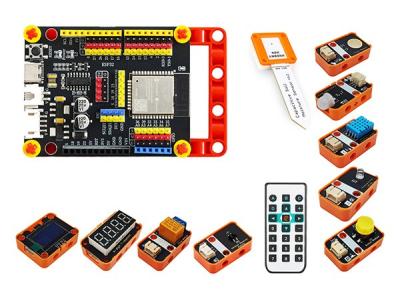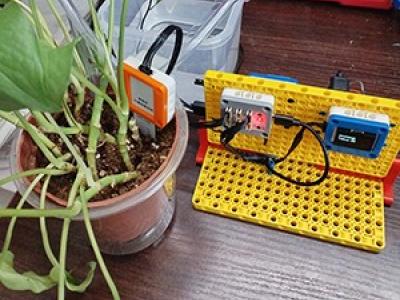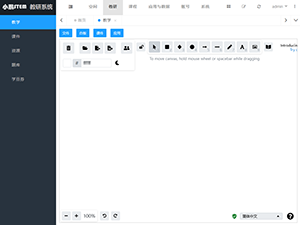MicroPython 开发ESP32应用之线程介绍及实例分析
MicroPython ESP32 线程(Thread)基础
MicroPython 在 ESP32 上支持线程(Thread)功能,通过_thread模块实现。线程允许程序并发执行多个任务,适合处理需要同时运行的场景,例如传感器数据采集和网络通信。
线程模块导入与基本方法
_thread模块提供线程管理的核心功能。需注意 MicroPython 的线程实现可能因硬件和固件版本不同而有所差异。
import _thread
import time
def thread_function(name):
for i in range(5):
print("Thread {}: Count {}".format(name, i))
time.sleep(1)
_thread.start_new_thread(thread_function, ("Thread-1",))运行结果:
Thread Thread-1: Count 0
Thread Thread-1: Count 1
Thread Thread-1: Count 2
Thread Thread-1: Count 3
Thread Thread-1: Count 4
线程同步与锁机制
多线程操作共享资源时需使用锁(Lock)避免竞争条件。_thread模块提供简单的锁实现。
lock = _thread.allocate_lock()
shared_data = 0
def safe_increment():
global shared_data
with lock:
shared_data += 1
print("Shared data:", shared_data)
_thread.start_new_thread(safe_increment, ())运行结果:Shared data: 1
ESP32 线程实例分析
以下实例展示如何在 ESP32 上使用线程处理传感器数据上传和 LED 控制:
import _thread
import time
from machine import Pin
led = Pin(2, Pin.OUT) # ESP32 板载 LED
data_lock = _thread.allocate_lock()
sensor_data = []
def sensor_thread():
while True:
simulated_data = time.ticks_ms() # 模拟传感器数据
with data_lock:
sensor_data.append(simulated_data)
time.sleep(0.5)
def network_thread():
while True:
with data_lock:
if sensor_data:
print("Uploading data:", sensor_data.pop(0))
time.sleep(1)
def led_thread():
while True:
led.value(not led.value())
time.sleep(0.2)
_thread.start_new_thread(sensor_thread, ())
_thread.start_new_thread(network_thread, ())
_thread.start_new_thread(led_thread, ())线程注意事项
ESP32 的 MicroPython 线程存在以下限制:
- 线程数量受内存限制
- 全局解释器锁(GIL)可能导致并非真正的并行
- 异常处理需谨慎,未捕获的异常可能导致线程崩溃
以下代码展示如何增强线程健壮性:
def robust_thread():
try:
while True:
# 线程主要逻辑
time.sleep(1)
except Exception as e:
print("Thread error:", e)
finally:
print("Thread exiting")
_thread.start_new_thread(robust_thread, ())线程优先级与调度
MicroPython 的线程调度通常是抢占式的,但具体行为取决于底层实现。开发者无法直接设置线程优先级,需通过延时控制来协调线程执行。
import _thread
import time
def high_freq_task(name,interval):
while True:
# 高频任务
print(name)
time.sleep(interval)
def low_freq_task(name,interval):
while True:
print(name)
time.sleep(interval)
_thread.start_new_thread(high_freq_task, ("High_Freq_Thread",1))
_thread.start_new_thread(low_freq_task, ("Low_Freq_Thread",5))运行结果:
High_Freq_Thread
High_Freq_Thread
High_Freq_Thread
High_Freq_Thread
Low_Freq_Thread
High_Freq_Thread
High_Freq_Thread
High_Freq_Thread
High_Freq_Thread
High_Freq_Thread
Low_Freq_Thread
参数说明:从上面例程及运行结果,我们很容易知道,第一个参数是线程名称,后面的参数就比较灵活,甚至可以不需要任何参数。
实例分析
下面代码是我们真实项目中的部分代码:
import _thread as thread
lock = thread.allocate_lock()
def configwifi_task(name):
if wlan.ssid and wlan.password:
with lock:
wlansts = wlan.check_wifi()
if not wlansts :
with lock:
tft.showstring("正在连接到 " + wlan.ssid,Chat_X_Posi,Chat_Hint_Y_Posi,color(0,0xff,0))
try:
with lock:
wlan.wlan.connect(wlan.ssid,wlan.password)
max_wait = 10
while max_wait > 0:
with lock:
wlansts = wlan.check_wifi()
if wlansts:
break
max_wait -= 1
text = "等待连接……" + "{:02d}".format(max_wait)
tft.showstring(text,Chat_X_Posi,Chat_Hint_Y_Posi + 20,color(0,0xff,0))
# print(text)
time.sleep(1)
with lock:
wlansts = wlan.check_wifi()
tft.fill(color(0,0,0))
tft.battery_status(H_Pixel - 20,0,20,12,percent)
tft.show()
if not wlansts:
tft.showstring("连接失败",Chat_X_Posi,Chat_Hint_Y_Posi,color(0,0xff,0))
except Exception as e:
# print(e)
tft.showstring("连接失败",Chat_X_Posi,Chat_Hint_Y_Posi,color(0,0xff,0))
thread.start_new_thread(configwifi_task,("wificonnect",)) 先简单说明一下,启动这个线程的原因。我们的项目需要用到WIFI,开始的时候,我们程序启动后直接连接WIFI,但很快发现,WIFI连接有时需要较长时间,甚至有时会接连失败,这就导致我们需要等待较长时间,才能进行后续的操作,所以我们建立了一个专门用于连接WIFI的线程。
之所以把这个线程拿出来作实例讲解,是因为我们刚开始的时候犯了个大错,我们没有添加线程锁机制,导致程序崩溃,启动直接崩溃,最要命的是,我们做这个之前没有备份,差不多3天修改添加的代码全在板上,电脑上最新的代码是3天前的。所以特意拿这部分代码出来做实例,提醒大家线程锁机制的重要性。
启用线程时,多个线程中都有访问的硬件资源一定要添加锁机制。
该线程本身的功能非常简单,就是连接WIFI,并等待10秒,连接成功则立即结束线程,否则提示连接失败结束线程。
来源:https://blog.csdn.net/weald2000/article/details/148203985
涨知识

排序
排序是计算机内经常进行的一种操作,其目的是将一组“无序”的记录序列调整为“有序”的记录序列。
评论:
ESP32 WebServer库处理表单请求
本文主要讲解WebServer库如何来处理表单请求。
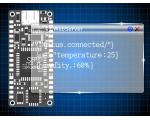
在esp32上运行WebServer
WebServer是非常常用的一个功能,在设备上使用该功能可以直接通过浏览器访问和操作设备。
Arduino-ESP32与ESP-IDF的版本对应表
Arduino-ESP32与ESP-IDF的版本对应表。
Arduino-ESP32文件系统全解析:SPIFFS、LittleFS、SD卡操作
Arduino-ESP32提供了多种文件系统解决方案,本文将深入解析SPIFFS、LittleFS和SD卡三种主流存储方案,帮助你做出最佳选择。
ESP32-P4-WIFI6开发板
ESP32-P4-WIFI6-DEV-KIT是一款微雪(Waveshare)设计的基于 ESP32-P4 的多媒体开发板,并集成 ESP32-C6,支持 Wi-Fi 6 和 BLE 5 无线连接。它提供丰富的人机交互接口,包括 MIPI-CSI (集成图像信号处理器 ISP)、MIPI-DSI、SPI、I2S、I2C、LED PWM、MCPWM、RMT、ADC、UART 和 TWAI 等。
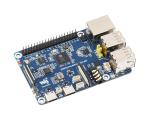
ESP-Hosted 入门介绍 &使用指南
ESP-Hosted 解决方案提供了将 ESP 板用作 Wi-Fi 和 Bluetooth/BLE 连接的通信处理器的方法。
设备上云太麻烦?ESP-Hosted一站触达!
ESP-Hosted 提供了一种将ESP芯片和模组用作通信协处理器的解决方案,该解决方案为主机微处理器或微控制器提供无线连接,使主机能够与其他设备通信。简单来说为网卡方案。
ESP32 + Arduino使用TFT_eSPI库
Arduino+ESP32上使用TFT_eSPI库快速点亮这个屏幕,驱动芯片ST7789
ESP32 利用 SPI 连通 TFT 彩屏
本文给出了一个ESP32与SPI 接口TFT显示屏接线的详细说明,供大家参考。





